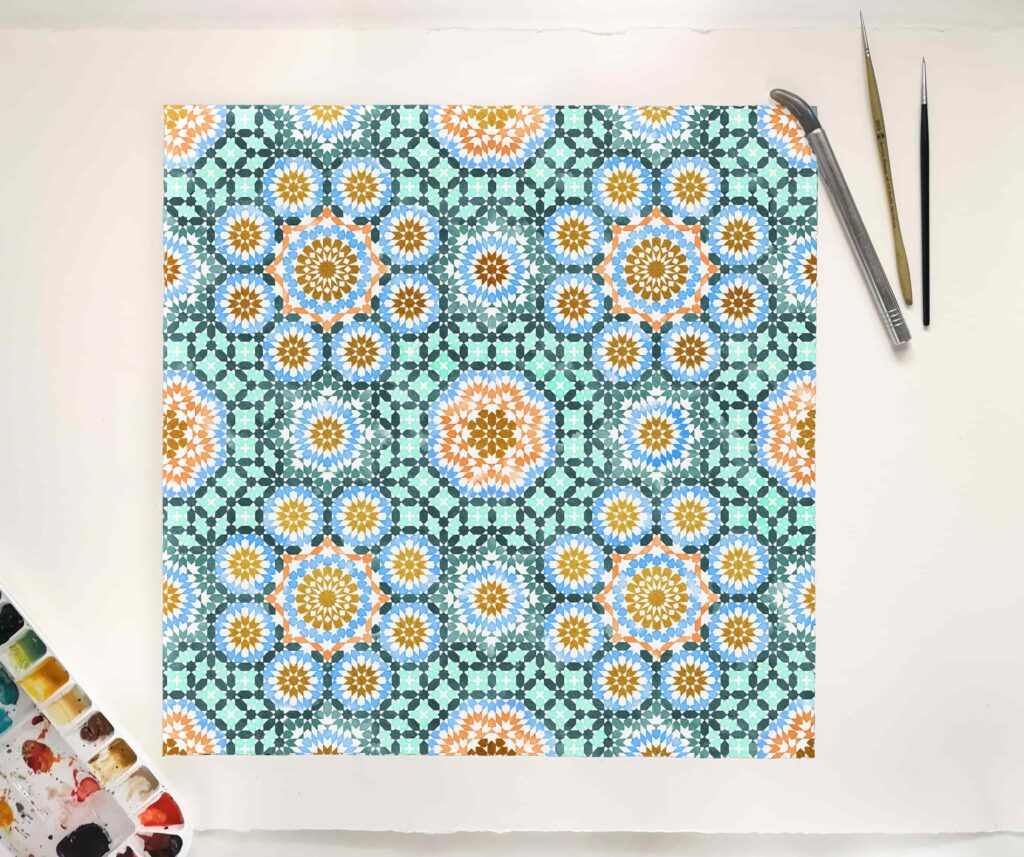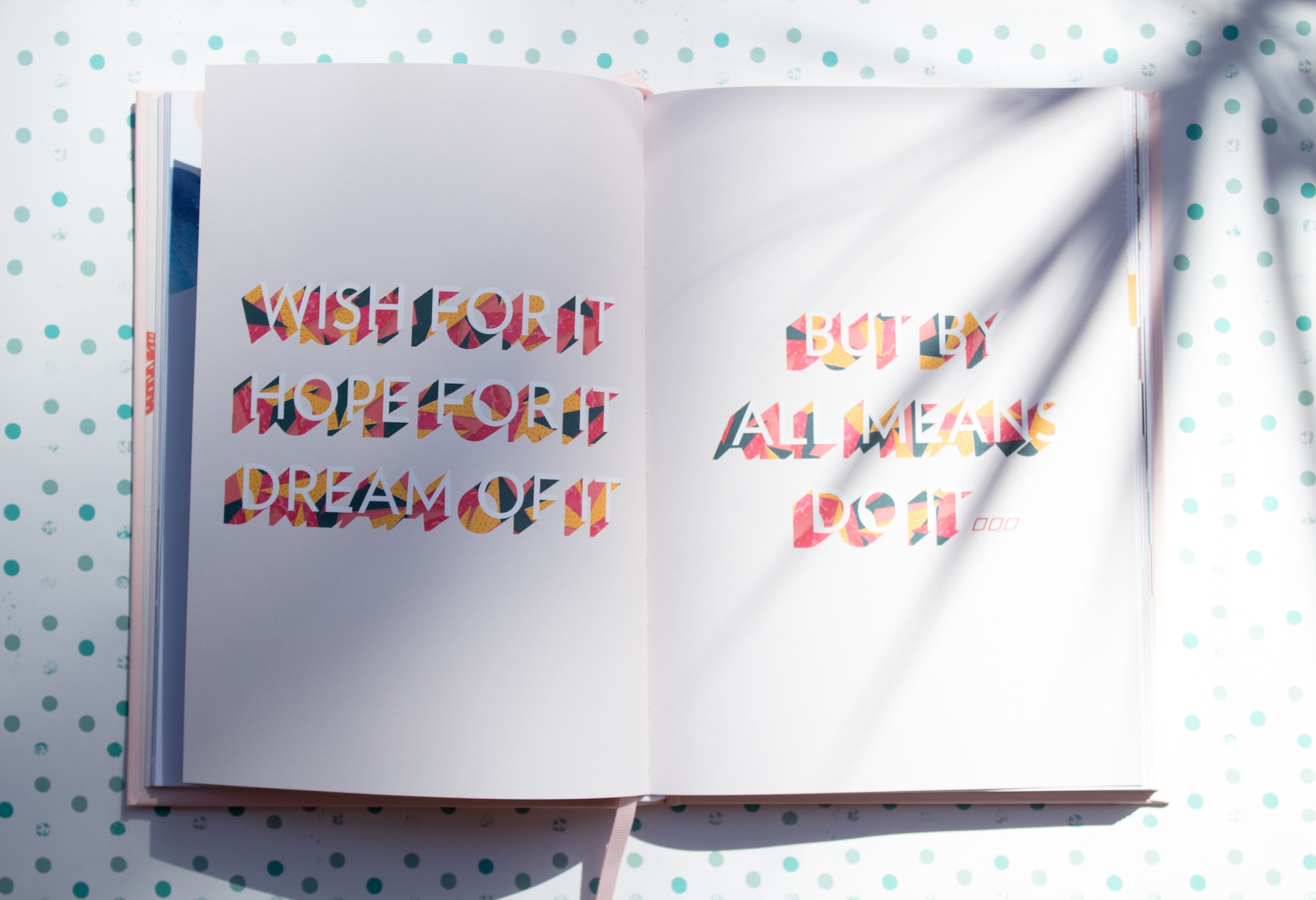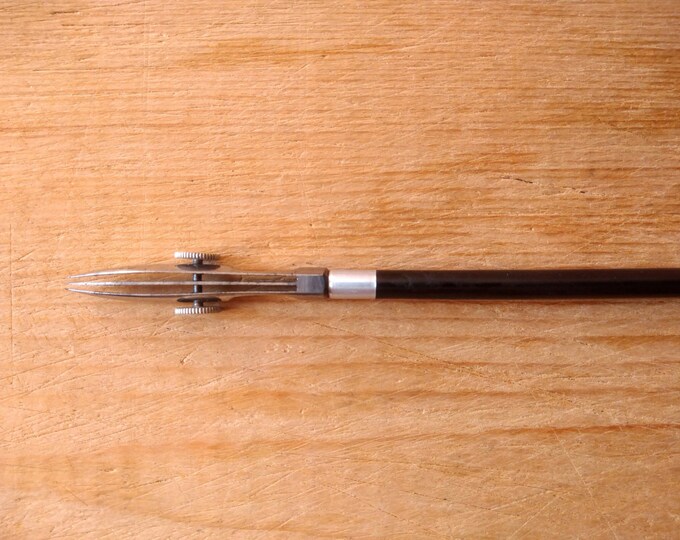
When practising Islamic art – whether it is Islamic geometry, Islimi or Arabic calligraphy – you have a lot of rules to follow. Rules about symmetry, rules about proportions, rules about tradition, you name it…
And if you are an outsider you might think that all these rules are very restrictive and that Islamic geometry limits the imagination.
But if you are a control freak like me, you will find out that the opposite is true. There is something oddly satisfying in having a structure and still being able to express creativity without overthinking.
So let’s dive in and discover the beauty of Islamic geometric patterns and their impact on our imagination!
Infinite Patterns
I know this might be strange because when you are a beginner you just draw and redraw existing patterns, but you can actually create new geometric patterns never seen before.
Even if there are specific guidelines that must be followed to achieve the desired effect, these can serve as a catalyst for innovation and artistic growth.
When faced with limitations, artists and designers are challenged to think outside the box and find new ways to express themselves within the given framework. This process can lead to the discovery of unique geometric patterns, infinite combinations, and variations that may not have been considered otherwise. In this sense, the boundaries set by Islamic geometry can foster an environment that encourages experimentation and exploration.
Once you know the basic rules, you know which ones you can break, and this allows you to be brave in your experimentation.
If you want to learn the rules of Zellige patterns and create your own Zellige design check out my courses here.
Infinite colours
While Islamic geometry is rooted in tradition and follows specific rules, it offers endless possibilities for creative expression. The vast array of colours and colour combinations allows for a multitude of variations and adaptations.
As artists and designers delve deeper into the world of Islamic geometry, they can uncover new layers of complexity and beauty. This ongoing process of learning and discovery can continually fuel the imagination, inspiring fresh ideas and innovative approaches to design.
If you want to learn how I choose the palette for my artwork, read my blog post “My top 3 secrets for the perfect colour palette”.
Infinite Applications
Islamic geometric patterns have transcended time and continue to influence contemporary design across various disciplines, from architecture to fashion. The timeless appeal of these intricate designs lies in their ability to evoke a sense of wonder and appreciation for the skill and craftsmanship involved in their creation.
For modern creatives, Islamic geometry serves as a rich source of inspiration, providing a unique perspective on the interplay between form, function, and aesthetics.
Islamic art is truly adaptive and can be used in many forms such as pottery, carpets, woodwork, metalwork, clothing, AI, and so on and so forth.
So does Islamic geometry limit your imagination?
Islamic art is more than just a set of rules – it’s an opportunity to explore the boundaries of creativity and imagination. With the right guidance, you can learn the basics and then break the rules to discover unique patterns and colour combinations for your own artwork.
So why not dive into the captivating world of Islamic geometric patterns and see where your imagination takes you?
Does Islamic geometry limit your imagination?
May 8, 2023



No, I’m not finding that this type of artwork is limiting. I’ve already devised some interesting things to fill the stars with.
I enjoy your website!! Glad I found it.